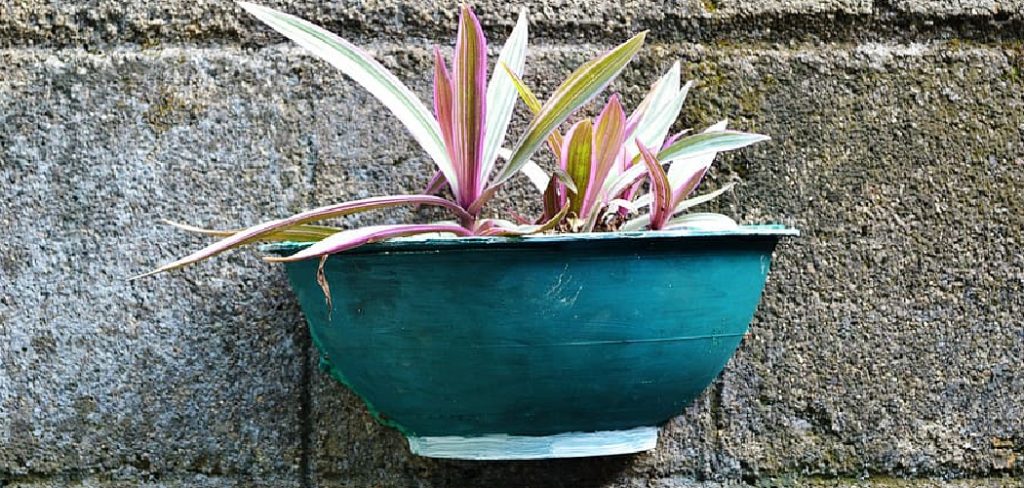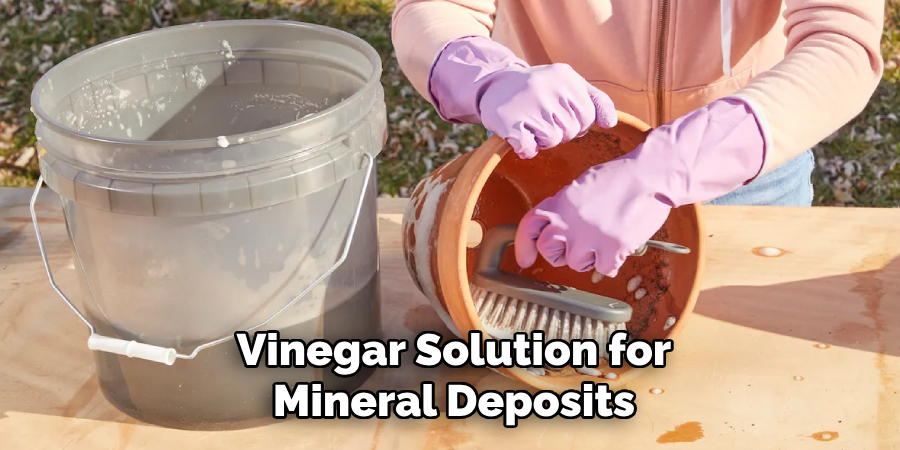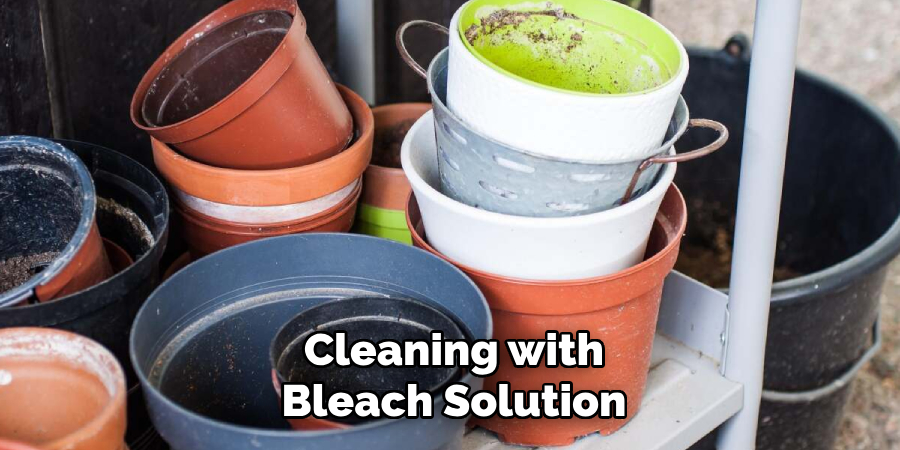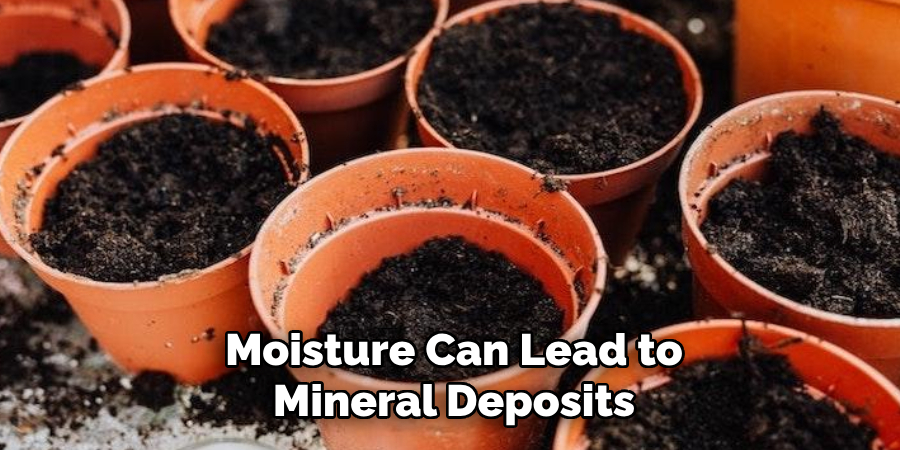Keeping your flower pots clean is essential to ensure healthy plant growth and prevent the spread of disease. Over time, pots can accumulate dirt, mineral deposits, and harmful bacteria that could impact the wellbeing of your plants. A clean pot provides a fresh start for new plants and helps maintain a thriving gardening environment. This guide explores the key aspects of how to clean a flower pot. Whether you’re reusing old pots or switching plants, taking the time to clean them properly can make a significant difference in their success.

Why Cleaning Flower Pots is Essential
Cleaning flower pots is an important step in maintaining a healthy gardening environment. Dirty pots can harbor pests, fungi, and bacteria that may harm your plants, leading to diseases and poor growth. Additionally, mineral deposits from water and fertilizers can build up inside pots over time, creating a residue that could interfere with a plant’s root system. By thoroughly cleaning your pots, you not only reduce the risk of contamination but also give your plants a fresh, clean space to thrive. Whether you’re transplanting plants or reusing old pots, a clean vessel ensures the best possible conditions for strong and vibrant plant development.
Supplies You’ll Need
To effectively clean your flower pots, you’ll need a few basic supplies. Here’s a list of what you should gather before starting:
- Scrub Brush or Sponge – For scrubbing away dirt, mineral deposits, and any stubborn residue inside and outside the pot.
- Mild Soap or Dish Detergent – Use a plant-safe soap to help remove grime without leaving harmful chemicals behind.
- Bucket or Sink – A container big enough to soak and wash your pots.
- White Vinegar – Useful for loosening tough mineral deposits and disinfecting.
- Bleach (Optional) – A diluted bleach solution can be used to sterilize pots and eliminate bacteria or fungi.
- Rubber Gloves – To protect your hands during cleaning and handling of pots.
- Towels or Drying Rack – For drying the pots thoroughly before reuse.
Having these supplies ready will make the cleaning process efficient and ensure your pots are ready for their next use.
10 Methods How to Clean a Flower Pot
1. Basic Cleaning with Soap and Water
For routine cleaning, using mild soap and warm water is a simple and effective method. Begin by emptying the pot of any remaining soil and plant debris. Fill a bucket or sink with warm water and add a few drops of dish soap. Use a scrub brush or sponge to clean the inside and outside of the pot, ensuring that any dirt or residue is removed. Pay special attention to drainage holes where soil and debris often accumulate. Once cleaned, rinse the pot thoroughly with fresh water to remove any soap residue. Allow the pot to dry completely before reuse to prevent mold or bacterial growth.
2. Soaking in Vinegar Solution for Mineral Deposits
Mineral deposits from hard water and fertilizers can leave unsightly white stains on pots, especially terracotta and ceramic ones. To remove these deposits, create a solution of equal parts white vinegar and water. Submerge the pot in the solution and let it soak for at least 30 minutes. If the stains are stubborn, use a stiff brush or sponge to scrub the affected areas. The acidity of the vinegar helps dissolve the mineral buildup, leaving your pots clean and refreshed. Rinse thoroughly with water and let them air dry before using them again.

3. Baking Soda Scrub for Stubborn Stains
Baking soda is a natural abrasive that helps remove tough stains and dirt from flower pots. To use this method, make a paste by mixing baking soda with a small amount of water. Apply the paste to stained areas and use a sponge or brush to scrub the surface. The mild abrasiveness of baking soda effectively lifts stains without damaging the pot. Once cleaned, rinse the pot thoroughly and let it dry. This method works particularly well for plastic, ceramic, and stone pots.
4. Using Hydrogen Peroxide to Eliminate Bacteria
Hydrogen peroxide is an excellent disinfectant that can kill bacteria, mold, and fungi that may linger in flower pots. To clean your pots, mix one part hydrogen peroxide with three parts water in a spray bottle. Spray the solution inside and outside the pot, focusing on areas that had previous plant growth. Let the solution sit for 10–15 minutes before scrubbing with a brush. Rinse the pot with water and allow it to dry completely before replanting. This method is especially useful for preventing the spread of plant diseases.
5. Deep Cleaning with Bleach Solution
For a thorough disinfection, a diluted bleach solution can be highly effective. Mix one part bleach with ten parts water in a large bucket. Submerge the pot in the solution for at least 10 minutes to kill any lingering pathogens. If the pot is too large, use a sponge or cloth to wipe it down with the solution. After soaking, scrub the pot if needed and rinse it several times with clean water to remove all traces of bleach. Allow the pot to air dry completely before using it to avoid harming new plants.

6. Scrubbing with a Wire Brush for Heavy Dirt
For pots that have accumulated thick layers of dirt, moss, or algae, using a wire brush can be a practical solution. After removing loose dirt and debris, use the brush to scrub the pot’s surface, focusing on the crevices and textured areas where dirt tends to settle. This method works particularly well for terracotta and concrete pots, which can withstand heavy scrubbing. Once clean, rinse the pot thoroughly with water and let it dry before reusing.
7. Pressure Washing for Large Pots
If you have large outdoor flower pots, a pressure washer can be an efficient way to clean them. Set the washer to a moderate setting and spray the pots from a distance to remove dirt, mold, and algae without damaging the material. Move the sprayer in circular motions to ensure even cleaning. If necessary, use a mild detergent in conjunction with the pressure washer for extra cleaning power. After washing, allow the pots to dry in the sun before replanting.

8. Using Lemon Juice for Salt Stains
Salt buildup from fertilizers or water can leave unsightly white stains on flower pots. Lemon juice, with its natural acidity, can help dissolve these deposits. Squeeze fresh lemon juice directly onto the affected areas and let it sit for 5–10 minutes. Use a scrub brush or cloth to rub the stains away, then rinse with clean water. If the stains persist, repeat the process or use a combination of lemon juice and baking soda for extra cleaning power. This method is safe and environmentally friendly, making it a great option for cleaning pots used for edible plants.
9. Steam Cleaning for Chemical-Free Sanitization
For those who prefer an eco-friendly approach, steam cleaning is a highly effective way to clean and sanitize flower pots without using chemicals. A handheld steam cleaner can be used to blast away dirt, mold, and bacteria from pots of all materials. The high temperature of the steam loosens debris and kills pathogens, making it an excellent option for cleaning pots that previously housed diseased plants. After steam cleaning, wipe away any remaining residue with a cloth and let the pot dry thoroughly.
10. Freezing to Kill Pests and Pathogens
An unconventional yet effective way to sterilize flower pots, especially if they have been affected by pests, is to freeze them. Place the empty pots in a freezer for 24–48 hours. The extreme cold temperatures kill insects, eggs, and bacteria that may be lingering inside the pot. After freezing, remove the pots and allow them to reach room temperature before washing them with soap and water. This method works particularly well for smaller plastic and ceramic pots that fit in a freezer.
Preventative Measures
Keeping flower pots clean is essential not only for aesthetic purposes but also for the health of your plants. Implementing a few preventative measures can reduce the need for intensive cleaning and extend the lifespan of your pots. Firstly, ensure proper drainage by using pots with holes and placing a layer of gravel or mesh at the bottom to prevent soil buildup. Regularly inspect plants for signs of disease or pests and address issues promptly to avoid contaminating the pot itself.
Use pot liners or trays to catch excess water and minimize residue accumulation. Additionally, avoid overwatering plants, as excessive moisture can lead to mineral deposits and mold growth. Finally, when replanting, thoroughly wash pots and remove old soil to eliminate potential pathogens. These habits not only maintain the cleanliness of your pots but also promote a healthier environment for your plants.

Conclusion
Regularly cleaning flower pots is an essential practice for maintaining plant health and ensuring the longevity of your pots. Whether you use simple soap and water, natural solutions like vinegar and lemon juice, or more intensive methods like bleach and pressure washing, each approach offers benefits tailored to different materials and cleaning needs. By incorporating these cleaning methods into your gardening routine, you can prevent disease, remove stubborn stains, and create a fresh and healthy environment for your plants. Thanks for reading, and we hope this has given you some inspiration on how to clean a flower pot!
Toby Rede is a professional potter focused on creating functional and artistic ceramics. His work blends natural textures with modern forms, often inspired by sustainable gardening and outdoor environments. Toby’s pottery emphasizes both utility and beauty, reflecting his philosophy of intentional craftsmanship. On the blog, he shares insights on integrating handmade objects into everyday life.
Education
- Associate Degree in Ceramic Technology, Alfred University
Professional Focus
- Pottery creation with a focus on functionality and artistic expression
- Techniques exploring texture, glazing, and sustainable materials
Professional Accomplishments
- Work featured in regional art shows and garden exhibitions
- Collaborations with local craft fairs and home decor shops

